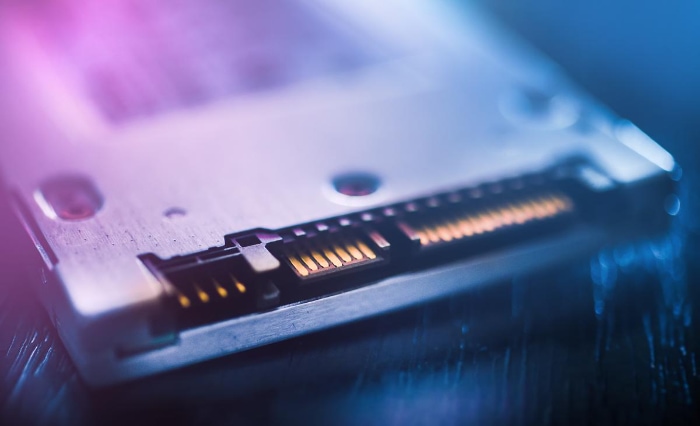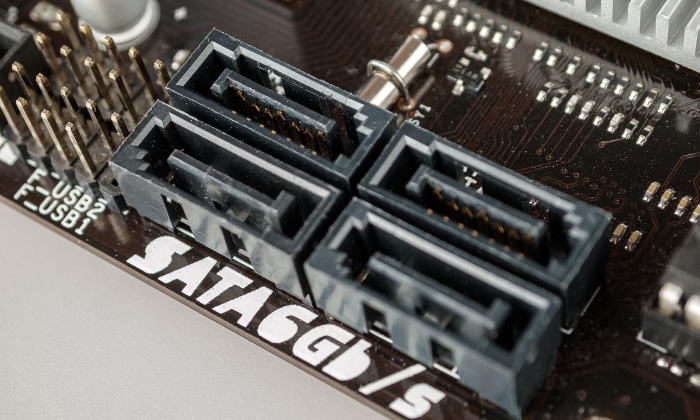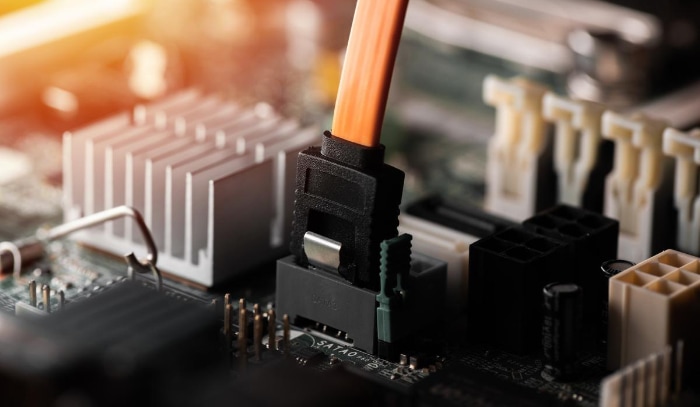SATA 2 vs. SATA 3: Which Is Better for You?

Serial ATA, commonly referred to as SATA, is a critical component that influences the speed and efficiency of our computing devices. It is the interface that connects the host bus to the mass storage devices such as hard drives, solid-state drives, and optical drives in a computer system.
This connection makes possible the transfer of data from storage to the system’s working components.
Understanding the nuances of SATA, specifically the differences between SATA 2 and SATA 3, can greatly enhance our comprehension of computer hardware, its development over time, and its impact on system performance. It can also guide us in making informed decisions when building or upgrading computer systems.
Understanding SATA Technology
Serial ATA, abbreviated as SATA, is a standard computer interface for connecting storage devices like hard drives and optical drives to the motherboard. This interface, built to replace the older Parallel ATA (PATA), has become a cornerstone for internal data transfer within computer systems.
The evolution of SATA began in the early 2000s. Recognizing the need for an improved data connection standard, the SATA International Organization (SATA-IO) was established.
The group aimed to design an interface that provided better speed, efficiency, and usability compared to the existing PATA technology.
In 2003, the first iteration of SATA, known as SATA 1 or SATA I, was introduced. This version provided a data transfer rate of 1.5 Gbit/s, a significant improvement over the maximum 133 MB/s offered by PATA.
The benefits of SATA didn’t stop at speed, though. Its cables were longer and thinner than PATA’s, allowing for greater flexibility in system design and improved airflow within the computer case.
SATA technology is integral to computer systems due to its role in transferring data between the CPU and storage devices. This includes the operating system, software applications, and personal files. The speed and efficiency of this data transfer directly impact the system’s performance, making SATA a critical consideration when building or upgrading a computer.
An In-Depth Look at SATA 2
As technology progressed and the demand for higher data transfer rates increased, the SATA International Organization introduced SATA 2, also known as SATA II or SATA 3G, in 2004. Designed to double the transfer rate of its predecessor, SATA 2 marked a significant leap forward in SATA technology.
Key Features and Specifications of SATA 2
Data Transfer Speed
The standout feature of SATA 2 is its maximum data transfer speed of 3 Gbit/s, twice the 1.5 Gbit/s offered by SATA 1. This increased speed significantly improved the performance of devices connected via SATA 2, especially noticeable in operations involving large amounts of data, such as loading games or transferring files.
Connector Type and Cable Length
SATA 2 maintained the same connector type and cable length as SATA 1. The connectors are “L” shaped to ensure proper orientation during installation, and the cables are approximately one meter long, providing flexibility in system design.
Compatibility with Previous Versions
One of the strengths of SATA 2 is its backward compatibility. This means that even if a motherboard only supports SATA 1, SATA 2 devices can still be connected and will function, albeit at the lower SATA 1 speed.
Typical Use Cases for SATA 2
SATA 2 found widespread use during its heyday, especially in desktop computers and laptops. It served as a standard interface for hard drives and optical drives.
Additionally, SATA 2 was commonly used in enterprise environments for RAID systems, where multiple hard drives work together to provide data redundancy and improve overall performance.
The introduction of SATA 2 marked a significant step forward in data transfer technology, providing users with faster speeds and maintaining the benefits of the original SATA design.
An In-Depth Look at SATA 3

As technological advancements continued to push the boundaries of data transfer speeds, the SATA International Organization unveiled SATA 3, also known as SATA III or SATA 6G, in 2009. Once again doubling the data transfer rate of its predecessor, SATA 3 represented another substantial evolution in SATA technology.
Key Features and Specifications of SATA 3
Data Transfer Speed
SATA 3’s most notable feature is its maximum data transfer speed of 6 Gbit/s, twice the speed of SATA 2. This increased speed further enhanced the performance of connected devices, dramatically reducing load times and data transfer times, which is especially beneficial for operations that handle vast quantities of data.
Connector Type and Cable Length
SATA 3 maintained the same connector type and cable length as its predecessors. The connectors continue to be “L” shaped for proper orientation, and the cables are still approximately one meter long, providing the same design flexibility as SATA 2 and SATA 1.
Compatibility with Previous Versions
Consistent with the SATA standard, SATA 3 is backward compatible with both SATA 2 and SATA 1. This ensures that SATA 3 devices can still function when connected to a motherboard that only supports SATA 2 or SATA 1, although they will operate at the respective lower speeds.
Typical Use Cases for SATA 3
SATA 3 is commonly used in modern desktop computers, laptops, and gaming consoles due to its high-speed data transfer capability. It’s the standard interface for hard drives and solid-state drives (SSDs), with the latter significantly benefiting from the enhanced speeds offered by SATA 3. This interface also found use in enterprise environments, including RAID systems and network-attached storage (NAS) devices.
SATA 3’s introduction marked another milestone in data transfer technology, providing even faster speeds and retaining the benefits of previous SATA designs.
Highlighting the Key Differences between SATA 2 and SATA 3
Now that we have a solid understanding of both SATA 2 and SATA 3, it’s time to place them side by side. This comparison will help us see how the two versions differ and how those differences might affect your system’s performance.
Comparative Analysis of Data Transfer Speeds
The most significant difference between SATA 2 and SATA 3 is the data transfer rate. While SATA 2 offers a maximum transfer speed of 3 Gbit/s, SATA 3 doubles this speed, reaching a maximum of 6 Gbit/s.
This speed difference can significantly impact the performance of data-intensive applications or when moving large quantities of data.
Impact on Overall System Performance
The data transfer speed difference between SATA 2 and SATA 3 can notably affect overall system performance. For everyday computing tasks or applications that aren’t data-intensive, this difference may not be noticeable.
However, for high-end gaming, video editing, 3D modeling, or other data-heavy applications, using SATA 3 can result in smoother, faster performance.
Specifically, solid-state drives (SSDs) benefit significantly from SATA 3’s higher speed. As SSDs are much faster than traditional hard drives, using SATA 3 allows SSDs to operate closer to their full potential.
Conversely, when SSDs are paired with SATA 2, their performance is bottlenecked by the lower transfer rate.
Compatibility with Older and Newer Hardware
Both SATA 2 and SATA 3 are backward compatible with their predecessor interfaces. This means that you can connect a SATA 3 device to a SATA 2 interface (and vice versa), and it will function correctly.
However, the device will operate at the speed of the slower interface. While this ensures broad hardware compatibility, it’s essential to match the interface speed with the device speed for optimal performance.
Navigating Your Choice: SATA 2 vs. SATA 3
Equipped with knowledge about SATA 2 and SATA 3, we’re now ready to address the critical question: which one is right for you?
Factors to Consider When Choosing between SATA 2 and SATA 3

Current Hardware and Compatibility
The first factor to consider is your current hardware. If your motherboard only supports SATA 2, buying a SATA 3 device will not improve your data transfer speed.
However, if you’re planning a future upgrade or building a new system, choosing SATA 3 devices ensures you’re prepared for a higher speed interface.
Usage Scenario
Your computing requirements play a crucial role in this decision. If you regularly use data-intensive applications like video editing software, 3D modeling tools, or high-end games, SATA 3’s faster transfer rates can significantly enhance your system’s performance.
On the other hand, for general usage like browsing, document editing, or streaming, the speed benefits of SATA 3 may not be noticeable.
Cost-effectiveness
While SATA 3 devices are generally more expensive than their SATA 2 counterparts, the cost difference has decreased as SATA 3 has become more prevalent. However, it’s still important to weigh the potential performance benefits against the cost, especially if you’re on a tight budget.
Practical Recommendations for Different User Profiles
For general users who primarily use their computers for browsing, streaming, and office applications, SATA 2 may be sufficient. It provides decent speed and performance for these tasks and can be a more cost-effective option.
However, for gamers, professionals, or enthusiasts who regularly run data-heavy applications, investing in SATA 3 is highly recommended. The enhanced data transfer speed can significantly improve application load times and overall system responsiveness.
Looking Ahead: The Future of SATA Technology
As technology has evolved, alternatives to SATA have emerged, offering greater speeds and different form factors. Notably, the Non-Volatile Memory Express (NVMe) standard, used with PCIe (Peripheral Component Interconnect Express) slots, has become increasingly popular in recent years.
NVMe drives offer dramatically faster data transfer rates than SATA, making them the preferred choice for high-performance applications.
In addition to NVMe, the M.2 form factor, which can use either SATA or PCIe NVMe interfaces, offers a more compact solution for storage, particularly in laptops and small form factor PCs.
Implications for Future Data Storage Technology and Systems
The future of SATA is likely to be influenced by these alternative technologies. As NVMe and M.2 drives become more affordable and widespread, they may eventually supplant SATA as the dominant storage interface, particularly in high-performance and mobile systems.
However, the universality, backward compatibility, and cost-effectiveness of SATA mean that it is likely to remain a viable choice for many users in the near future, particularly in budget and mid-range systems.
Conclusion
As we journey through the ever-evolving world of technology, it’s crucial to understand the nuances of the components that power our digital experiences. SATA technology, with its various iterations, plays a vital role in this landscape, directly influencing the performance of our computing systems.
In this exploration of SATA 2 and SATA 3, we’ve uncovered the key characteristics of these two prominent versions. While they share many similarities in terms of design and compatibility, their differing data transfer speeds can lead to notable variations in system performance.
Therefore, it’s important to consider your specific computing needs and hardware when choosing between them.
As we look ahead, we see that SATA continues to evolve, with newer standards offering ever-increasing speeds. However, emerging technologies such as NVMe and the M.2 form factor are offering compelling alternatives, particularly for high-performance and mobile systems.
As these technologies become more accessible and widespread, the data storage landscape may shift significantly.
Despite these potential changes, SATA’s robustness, wide compatibility, and cost-effectiveness mean it remains a significant player in the realm of data storage technology. As we continue to navigate this ever-changing landscape, understanding the role and evolution of technologies like SATA empowers us to make informed choices, ensuring we can harness the power of our devices to their fullest potential.



